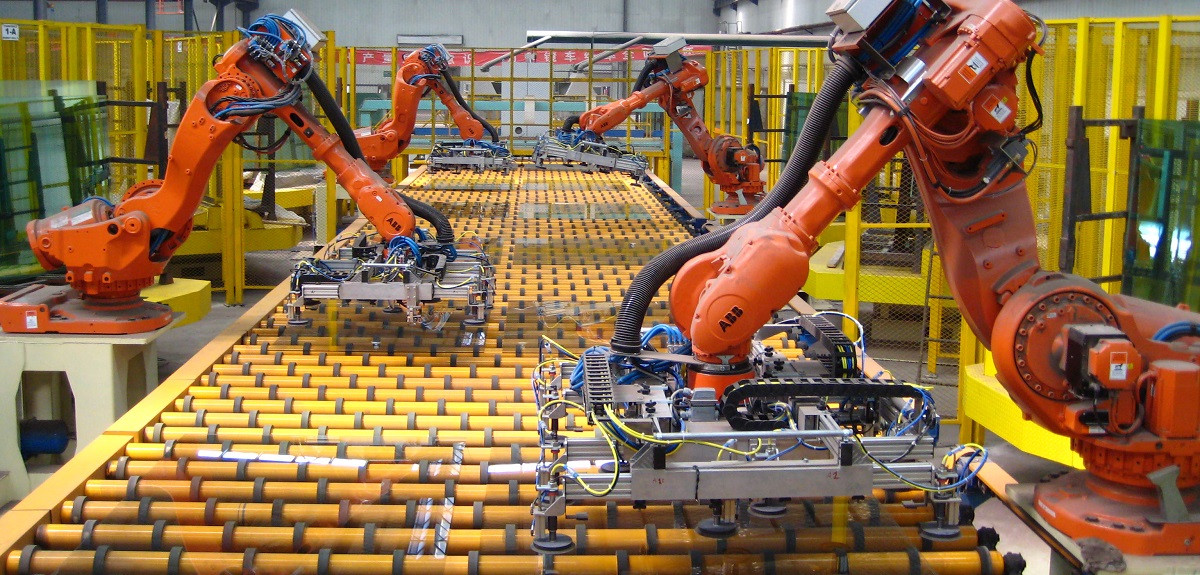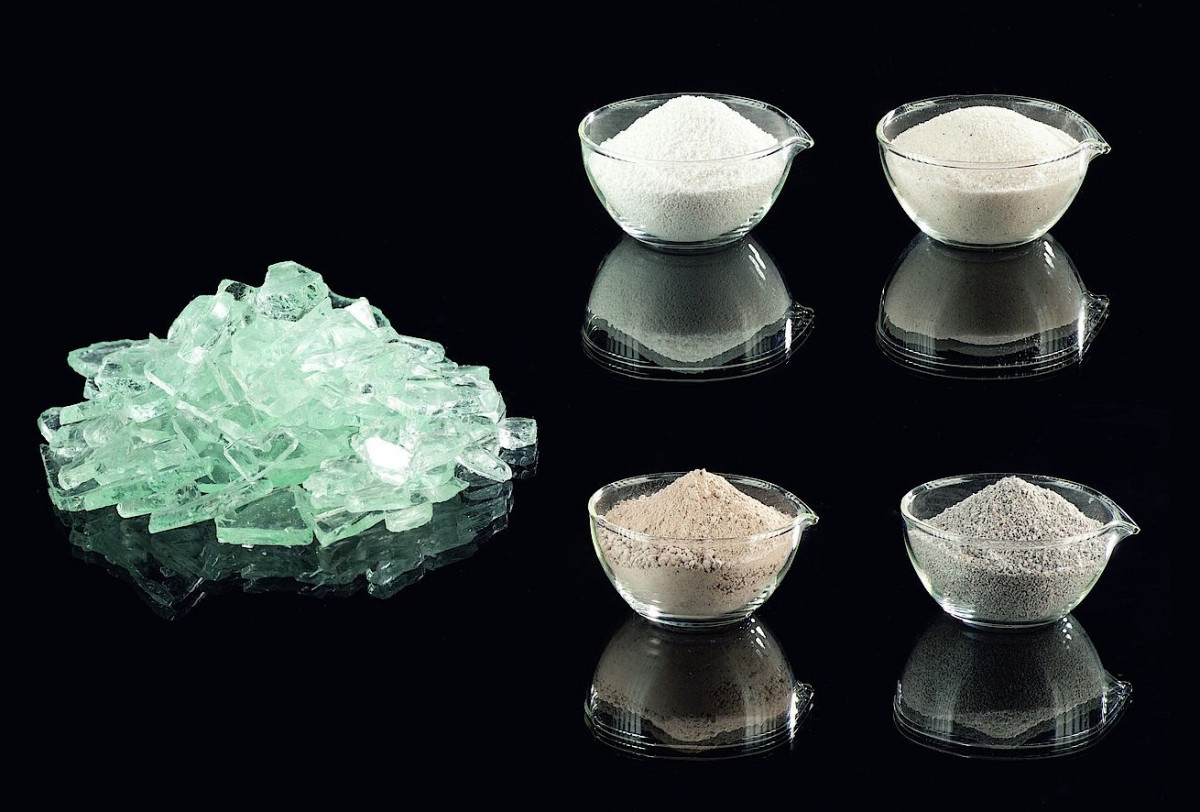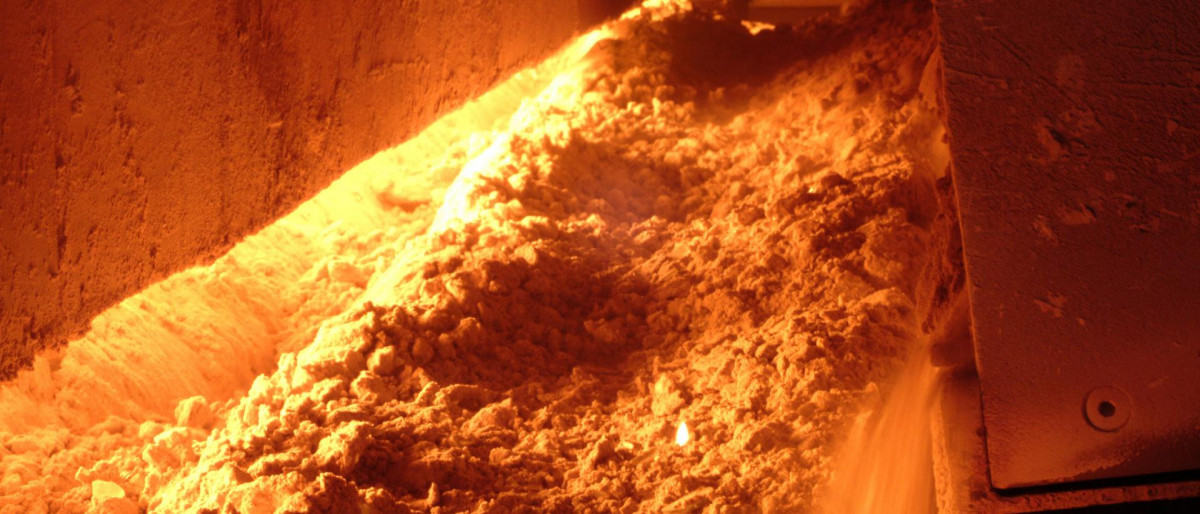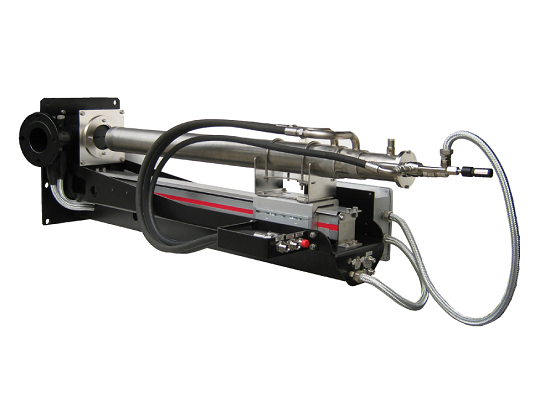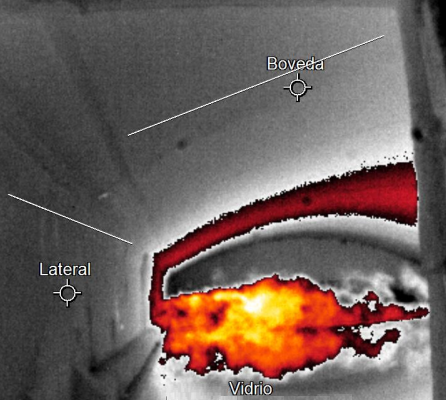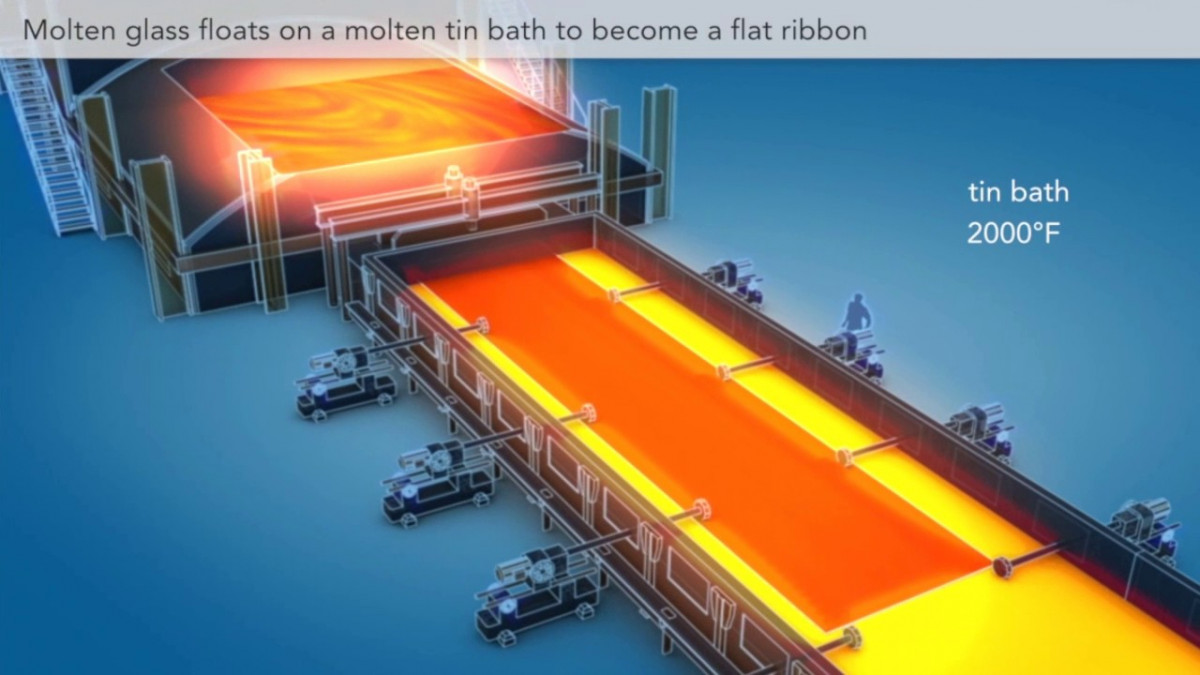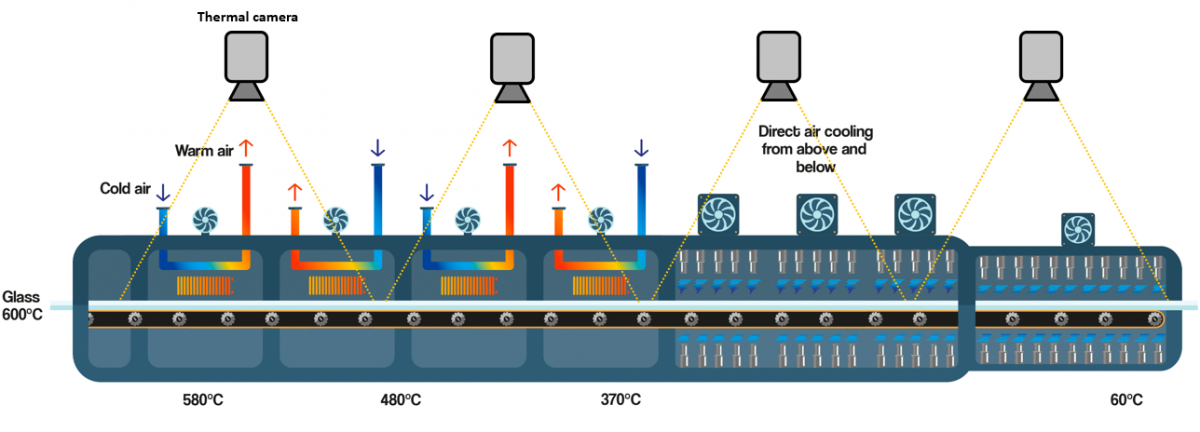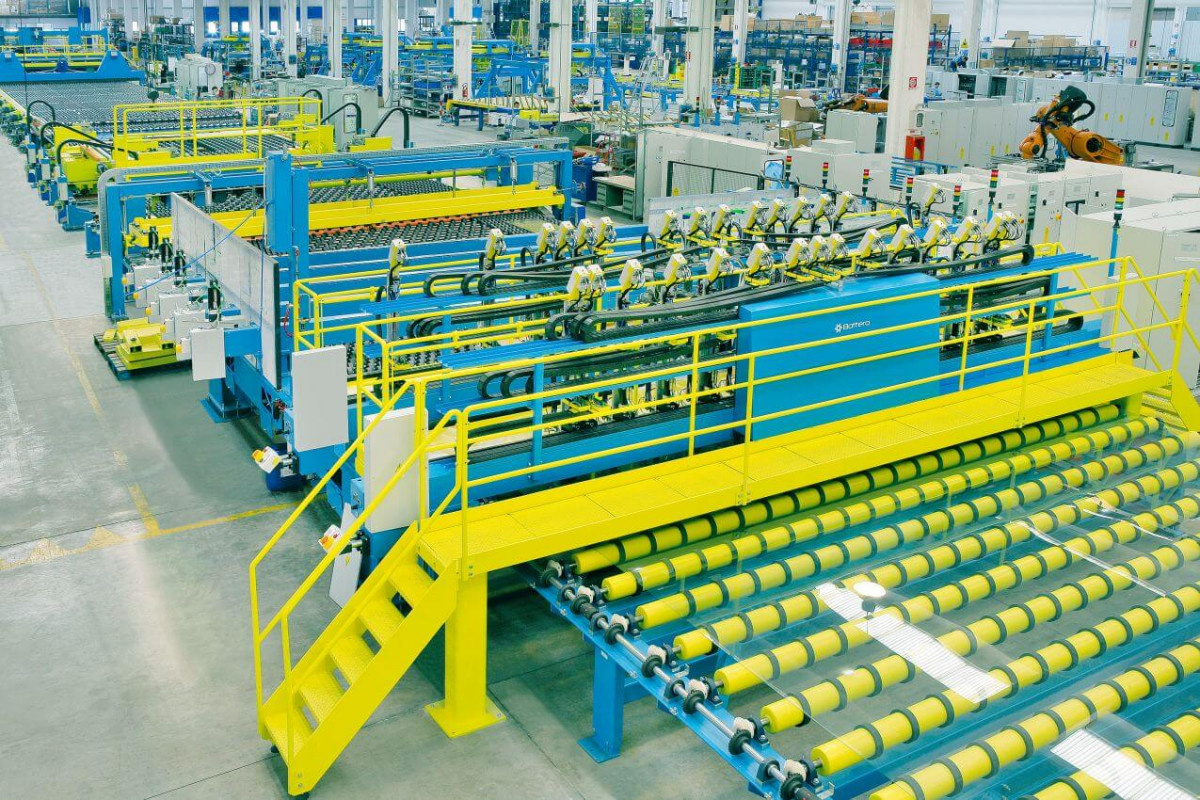Float glass
Float glass is a sheet of glass made by floating molten glass on a layer of molten tin. This method gives the glass a uniform thickness and a flat surface.
In float glass production, temperature has a direct impact on the quality of the glass.
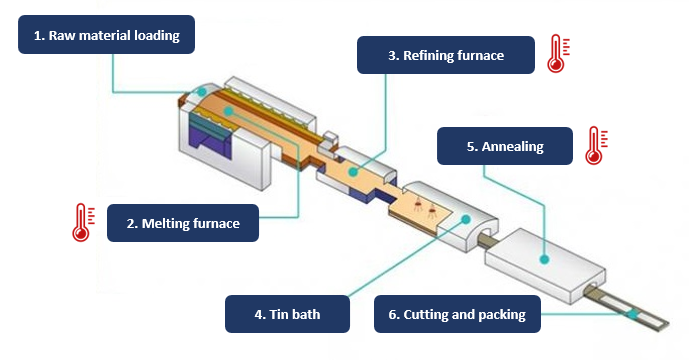
Figure.: float glass production diagram
1. Raw material loading
In the float glass manufacturing process, the first stage is the loading of raw material, which includes approximately 60% quartz, 20% soda and sulfate, and 20% limestone and dolomite.
2. Melting furnace
The raw material is introduced into the melting furnace at a temperature of 1.500°C or higher where it flows as molten glass.
To maintain the temperature, the furnaces are fed slowly to operate at the required temperature. Temperature monitoring is critical to meet the highest standards of quality and reliability.
The ProTIR® Infrared Thermal Imaging System is ideal for glass melting furnaces, allowing to control and optimize the process, save energy and extend furnace life.
Related article:
“Continuous monitoring of furnace temperature in glass manufacturing”
3. Refining furnace
In the refining furnace, the molten glass enters in a process where it is cooled to a temperature of approximately 1.100 – 1.300°C and air bubbles are eliminated.
In this preparation stage before the tin bath, the ProTIR® Infrared Thermal Imaging System is also ideal for the monitoring and control of the temperature inside the furnace.
4. Tin Bath
The molten glass at 1.100°C flows gently over a refractory and is spread evenly over the surface of this bath, floating on the molten tin.
The molten glass is smoothly and uniformly molded to the shape of the surface of the molten tin and leaves the float bath as a solid ribbon at 600°C.
5. Annealing
After the tin bath, the flat glass has a temperature of approximately 600°C.
In the transition to the cooling zone and in the other subsequent cooling areas, infrared cameras are used for temperature inspection and monitoring in line scan mode.
Figure: Thermal cameras monitoring the temperature in the annealing area
VisionTIR infrared cameras allow non-contact control of the cooling process temperature in the annealing lehr.
The VisionTIR cameras are used as linear scanners to monitor and control the temperature providing real-time thermal images of large sheets of glass.
This is possible because of VisionTIR thermal cameras high image acquisition frequency, high optical resolution and compact design.


